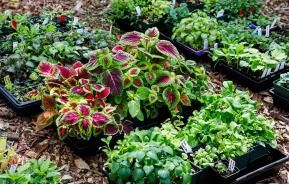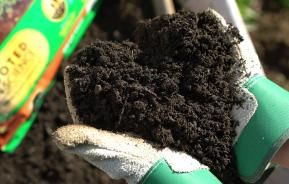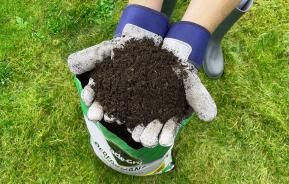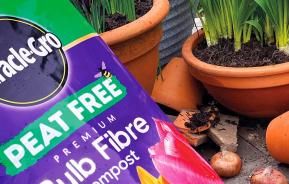Yuccas are grown for their ornamental evergreen, sword-shaped leaves and large panicles of white or creamy-white flowers in late summer and autumn.
There are several species commonly grown - some are hardier than others. Yucca filamentosa, Yucca flaccida and Yucca gloriosa are among the hardiest and commonly grown outside in the garden. Others, such as Yucca elephantipes, are not as hardy and are grown as houseplants.
Several varieties are available that have very attractive, variegated foliage, such as Yucca filementosa Bright Edge and Variegata, Yucca flaccida Golden Sword and Yucca gloriosa Variegata.
How to grow yucca
Growing yucca indoors
Indoor yucca plants prefer a brightly lit position, preferably a south-facing or west-facing aspect, but they will grow in slightly less well lit conditions. They can be moved outside to a warm, sunny patio in summer - but make sure you bring them back indoors before the weather turns cold in early autumn.
Growing yucca outdoors
Hardy outdoor yucca plants need a sunny position and good, well-drained soil.

Where to plant yucca indoors
Yuccas will grow in most good multi-purpose composts or a John Innes Compost.
Where to plant yucca outdoors
Dig over the soil thoroughly and add lots of bulky organic matter, such as planting compost, to break up heavy soils and help ensure good drainage for the yucca plant outdoors.
Plant in good sized pots using John Innes compost.
Suggested yucca planting locations and garden types
Flower borders and beds, patios, containers, city and courtyard gardens, houseplant, indoor plant, summer patio plant.
Indoor yucca houseplant care
Water indoor yucca plants moderately when plants are in growth (April to September), but more sparingly when dormant (autumn and winter) - once or twice a month may be sufficient. Allow the soil to dry out slightly before watering again.
Feed with a balanced liquid feed every few weeks during the growing season from late spring to late summer.
Outdoor yucca plant care
Outdoors, yucca plants planted in the ground need very little care and attention. Once established, it’s unlikely plants will need watering. Feed once a year with a controlled-release feed applied in spring.
Remove lower leaves as they turn brown. Be careful of the leaves as they have strong spikes at their tips, which can cause severe pain - and be especially careful of your eyes; protective goggles are a good idea.
When flowers in the flower spikes have died, cut down the flowering stem to its base where it joins the main part of the plant.
| Flowering season(s) | Summer, Autumn |
|---|---|
| Foliage season(s) | Spring, Summer, Autumn, Winter |
| Sunlight | Partial shade, Full sun |
| Soil type | Chalky, Clay, Loamy, Sandy |
| Soil pH | Neutral |
| Soil moisture | Moist but well-drained |
| Ultimate height | 1.5-2.4m (5-8ft) |
| Ultimate spread | 1.8m (6ft) |
| Time to ultimate height | 5-10 years |








